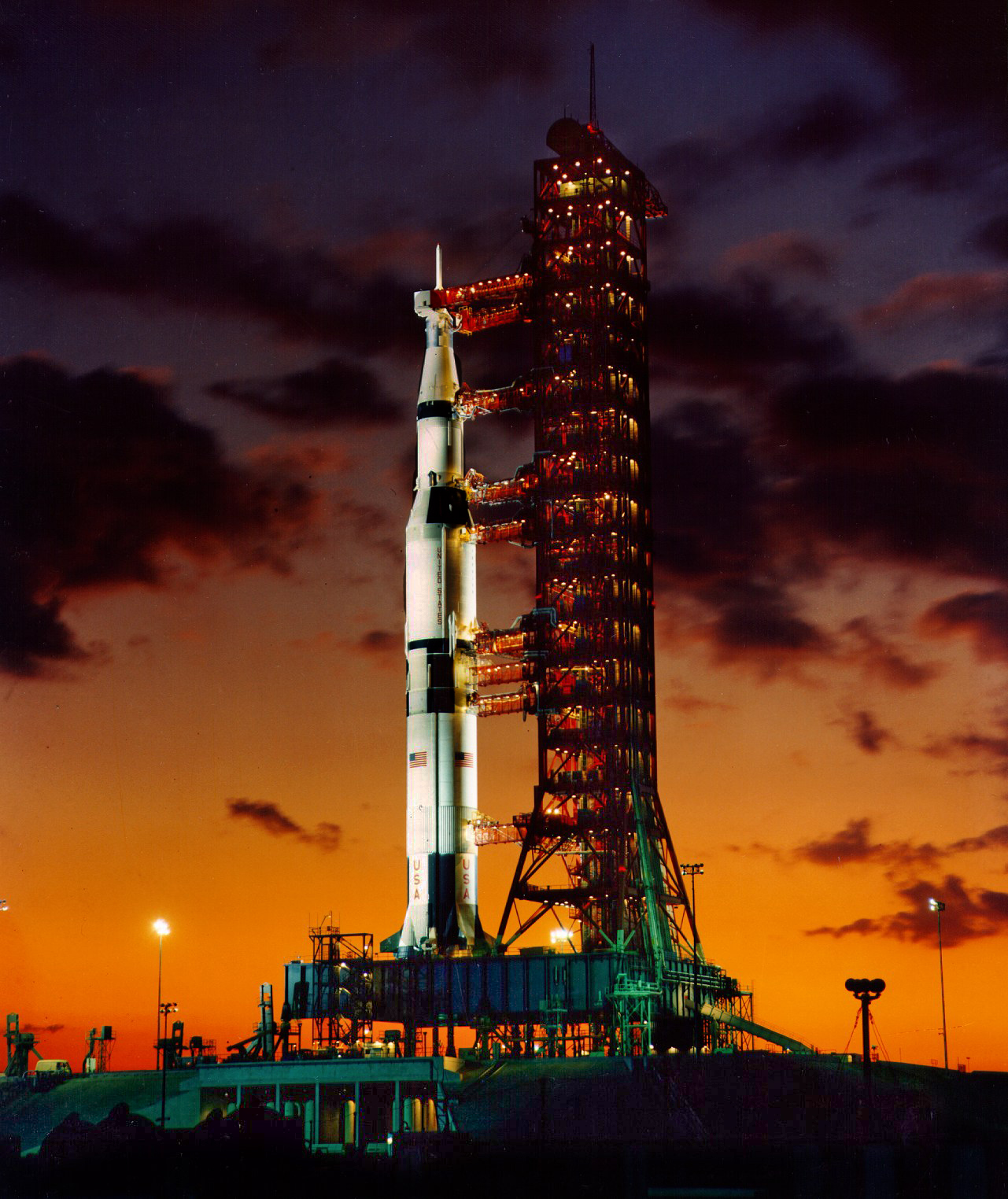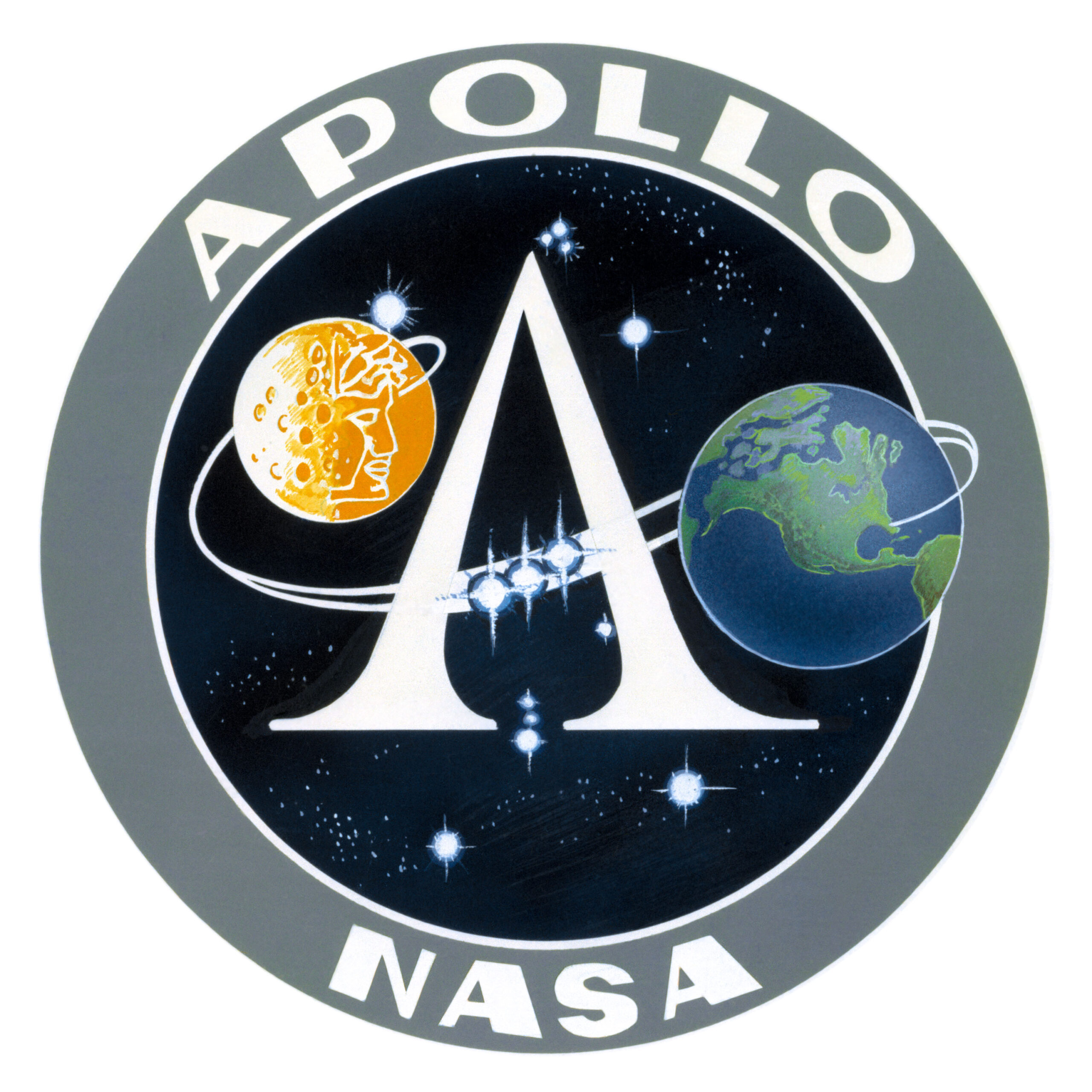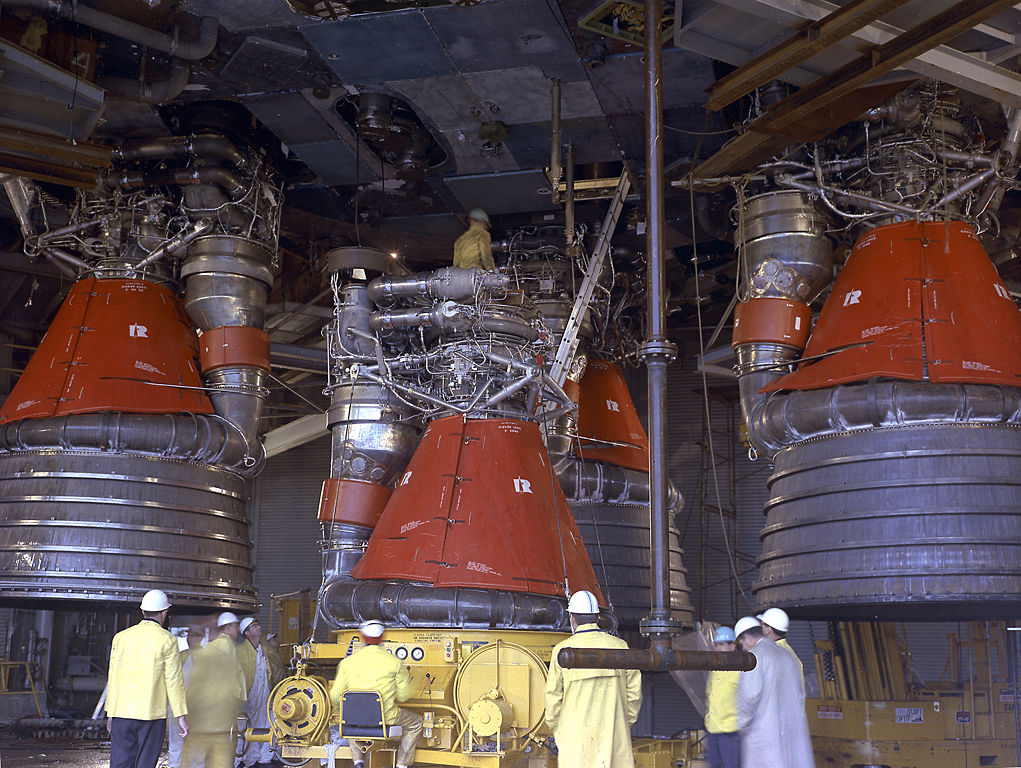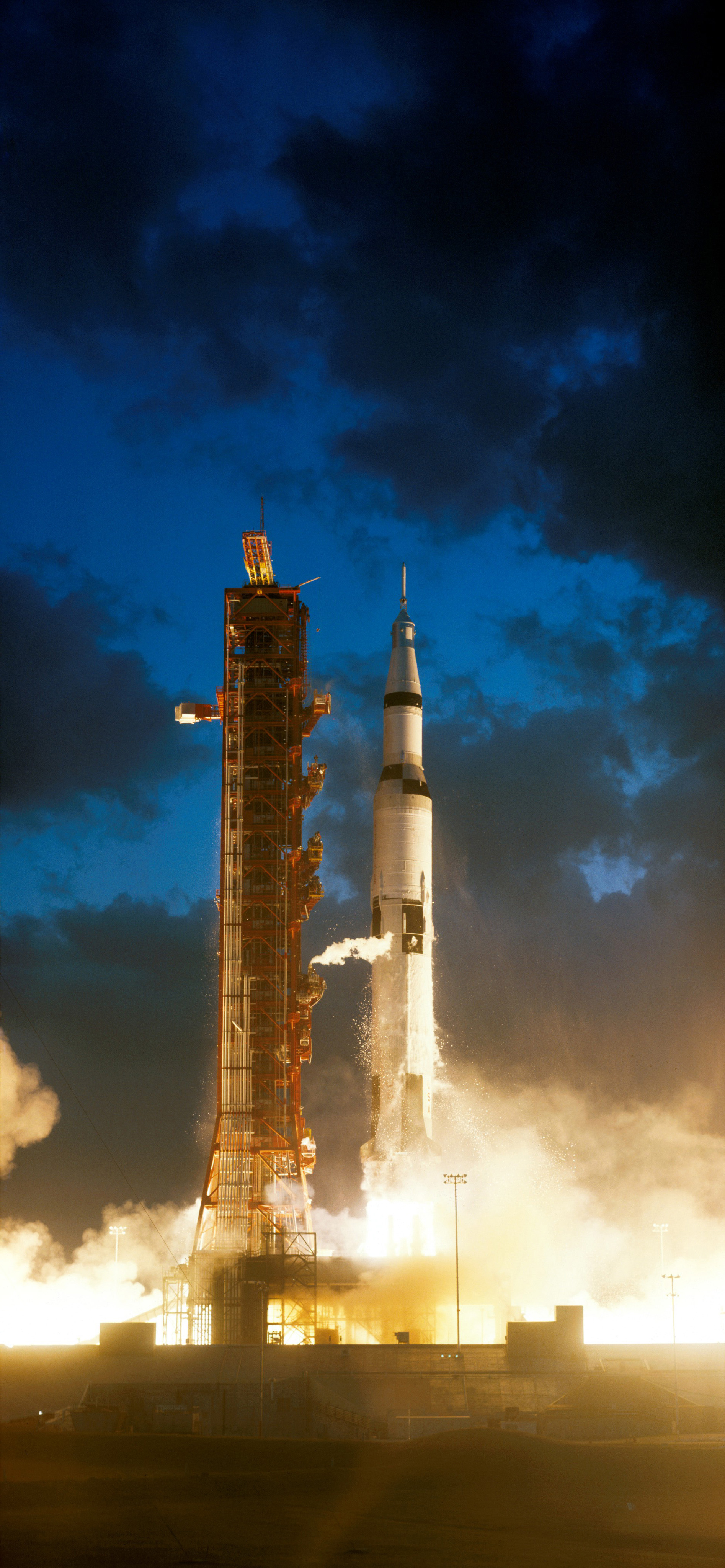
 9 November 1967: The first flight of a Saturn V took place when the unmanned Apollo 4/Saturn V (AS-501) was launched from Pad 39A at the Kennedy Space Center, Cape Canaveral, Florida. The rocket lifted off at 12:00:01.263 UTC.
9 November 1967: The first flight of a Saturn V took place when the unmanned Apollo 4/Saturn V (AS-501) was launched from Pad 39A at the Kennedy Space Center, Cape Canaveral, Florida. The rocket lifted off at 12:00:01.263 UTC.
AS-501 consisted of the first Saturn V launch vehicle, SA-501, with Apollo Spacecraft 017 (a Block I vehicle with Block II upgrades), and included the Launch Escape Tower, Command Module, Service Module, Lunar Module Adapter, and Lunar Module Test Article LTA-10R).
The Saturn V rocket was a three-stage, liquid-fueled heavy launch vehicle. Fully assembled with the Apollo Command and Service Module, it stood 363 feet, 0.15 inches (110.64621 meters) tall, from the tip of the escape tower to the bottom of the F-1 engines. The first and second stages were 33 feet, 1.2 inches (10.089 meters) in diameter. Fully loaded and fueled the rocket weighed 6,200,000 pounds (2,948,350 kilograms).¹ It could lift a payload of 260,000 pounds (117,934 kilograms) to Low Earth Orbit.
The first stage was designated S-IC. It was designed to lift the entire rocket to an altitude of 220,000 feet (67,056 meters) and accelerate to a speed of more than 5,100 miles per hour (8,280 kilometers per hour). The S-IC stage was built by Boeing at the Michoud Assembly Facility, New Orleans, Louisiana. It was 138 feet (42.062 meters) tall and had an empty weight of 290,000 pounds (131,542 kilograms). Fully fueled with 203,400 gallons (770,000 liters) of RP-1 and 318,065 gallons (1,204,000 liters) of liquid oxygen, the stage weighed 5,100,000 pounds (2,131,322 kilograms). It was propelled by five Rocketdyne F-1 engines, producing 1,522,000 pounds of thrust, each, for a total of 7,610,000 pounds of thrust at Sea Level.² These engines were ignited seven seconds prior to lift off and the outer four burned for 168 seconds. The center engine was shut down after 142 seconds to reduce the rate of acceleration. The F-1 engines were built by the Rocketdyne Division of North American Aviation at Canoga Park, California.

The S-II second stage was built by North American Aviation at Seal Beach, California. It was 81 feet, 7 inches (24.87 meters) tall and had the same diameter as the first stage. The second stage weighed 80,000 pounds (36,000 kilograms) empty and 1,060,000 pounds loaded. The propellant for the S-II was liquid hydrogen and liquid oxygen. The stage was powered by five Rocketdyne J-2 engines, also built at Canoga Park. Each engine produced 232,250 pounds of thrust, and combined, 1,161,250 pounds of thrust.³
The Saturn V third stage was designated S-IVB. It was built by Douglas Aircraft Company at Huntington Beach, California. The S-IVB was 58 feet, 7 inches (17.86 meters) tall with a diameter of 21 feet, 8 inches (6.604 meters). It had a dry weight of 23,000 pounds (10,000 kilograms) and fully fueled weighed 262,000 pounds. The third stage had one J-2 engine and also used liquid hydrogen and liquid oxygen for propellant.⁴ The S-IVB would place the Command and Service Module into Low Earth Orbit, then, when all was ready, the J-2 would be restarted for the Trans Lunar Injection.
Eighteen Saturn V rockets were built. They were the most powerful machines ever built by man.

¹ The AS-501 total vehicle mass at First Motion was 6,137,868 pounds (2,784,090 kilograms).
² Post-flight analysis gave the total thrust of AS-501’s S-IC stage as 7,728,734.5 pounds of thrust (34,379.1 kilonewtons).
³ Post-flight analysis gave the total thrust of AS-501’s S-II stage as 1,086,396 pounds of thrust (4,832.5 kilonewtons).
⁴ Post-flight analysis gave the total thrust of AS-501’s S-IVB stage as 222,384 pounds of thrust (989.2 kilonewtons) during the first burn; 224,001 pounds (996.4 kilonewtons) during the second burn.
© 2017, Bryan R. Swopes